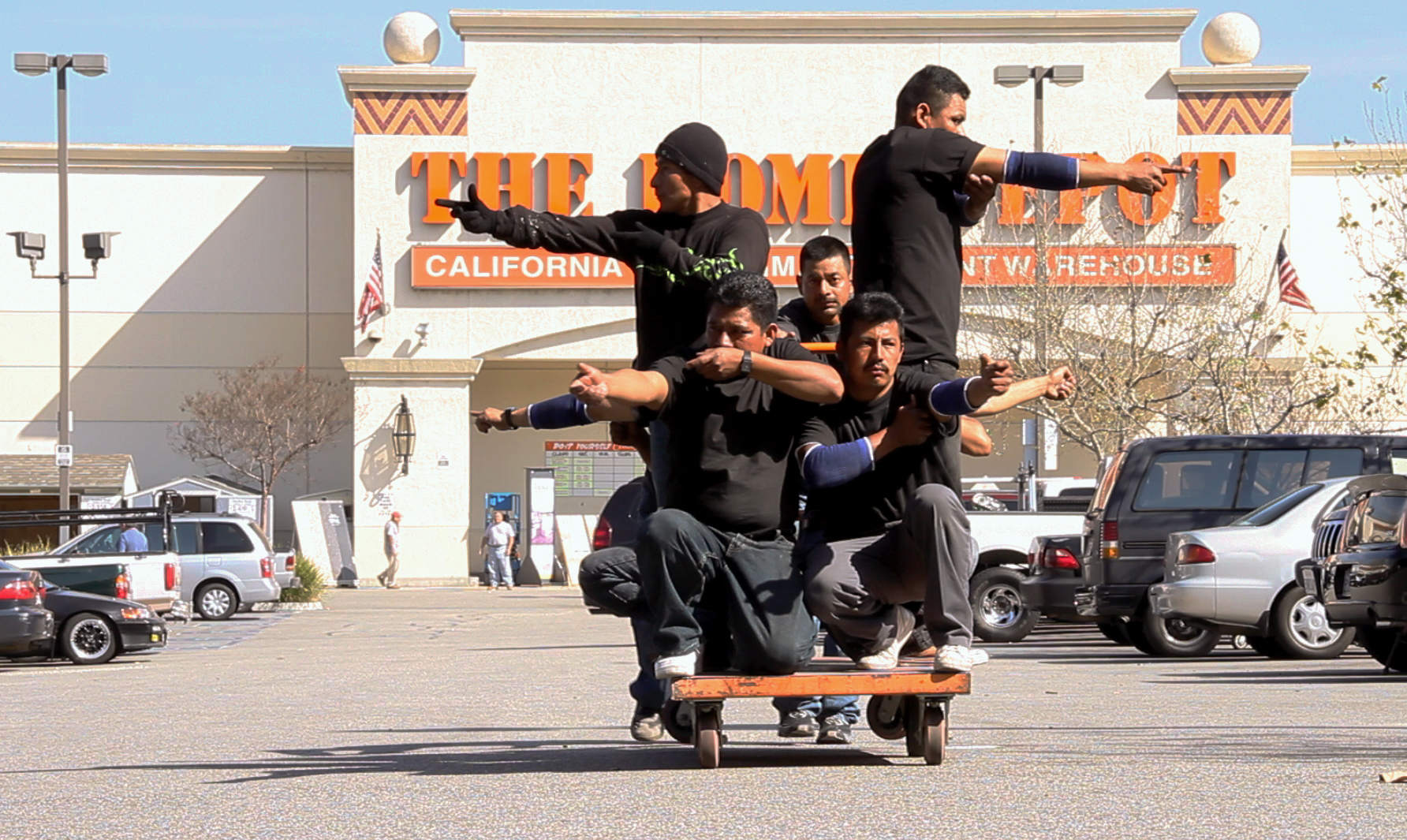UCLA alum Yoshua Okón's art exhibit 'Octopus' highlights Guatemalan ex-soldiers in America

A still from the video portion of UCLA MFA alumnus Yoshua Okón’s video and sculptural installation, “Octopus,” which is being shown at the Hammer Museum. Okón is being featured as an artist in residence.
Credit: Hammer Museum
By Annie Cauffman
Aug. 15, 2011 12:00 a.m.
After meeting day laborers outside of a Cypress Park Home Depot, artist Yoshua Okón was inspired to do more than hire them. He was inspired to feature their story in a new art installment.
Okón, a UCLA alumnus and artist-in-residence at the Hammer Museum, will show “Octopus,” a new video and sculptural installation that explores the fate of former Guatemalan civil war soldiers in America. It will be on exhibit at the Hammer Museum until Nov. 6.
“Octopus” is the latest of Okón’s multimedia art pieces. According to Okón, “Octopus” focuses on geographic location in two ways. It features the displaced Guatemalan soldiers who became Home Depot day laborers in video feeds of the laborers fighting an abstract, simulated war in the Home Depot parking lot. The exhibit also manipulates the physical space of those viewing the installation at the Hammer Museum.
“Juxtaposition between (the) Guatemalan ex-soldiers and the location where the shoot took place is super important. So, in the installation, I want the viewers to be very conscious of the space,” Okón said.
The installation, according to Okón, invites viewer interaction through its display consisting of four separate videos on different walls and at varying heights.
“The installation makes you interact in a very specific way and somehow forces you to connect the dots. I’m not giving it to you in a digestive way; you have to interact … (and) construct the space,” Okón said.
According to Hammer Museum curator Ali Subotnick, consistent with Okón’s other video installations, “Octopus” is presented with lightheartedness evident in the installation’s inclusion of Home Depot buckets for seats and the playful tone of the video.
“(Okón) doesn’t want to be didactic … the way he can mix humor with the controversial political issues and (without telling) you what’s right and wrong (is interesting),” said Subotnick.
According to Okón, his art is inspired by an open-minded interaction with the world around him.
“A lot of inspiration comes from everyday life experience. I’m not interested in making art out of theory books or even my own theories. I’m much more interested in making art about my everyday life and what my experiences are,” he said.
His other video installations explore topics such as Nazi memorabilia collectors, pit bull owners and the homeless in Venice Beach. However, Okón said that his work is not exclusively about controversial minorities.
“In my work, I am interested in mainstream perceptions, in how our understanding of reality is highly conditioned by learned notions as opposed to the notions we formulate on our own,” said Okón.
Okón said he defines “mainstream” as a reliance on conventions within society, which he tries to break down with his video installations.
“Art is a way for us to step back a little bit and generate our own ideas ““ a way to reformulate our understanding of the world,” said Okón.
According to Subotnick, Okón portrays the former Guatemalan soldiers’ situation in an unexpected way by staging a war in a parking lot to reconfigure how the viewers will understand the situation.
“He’s interested in the “˜slipperiness’ of (the circumstances of the Guatemalan civil war) and in asking questions,” Subotnick said.
Andrew Berardini, a Los Angeles-based critic, freelance curator and former collaborator with Okón said that, although Okón’s subjects present controversial viewpoints, they are always given a say in their representation.
“He’s collaborating with the communities but never exploiting them. … (But) sometimes, because the politics are provocative, people can have knee-jerk reactions, but it’s really more complex and deep,” Berardini said.
According to Okón, any kind of reaction to his art is a step toward his ultimate goal of furthering the dialogue between different types of people.
“Hopefully, anyone who looks at my work will rethink the world around them,” Okón said.

